Facts About African Buffalos.
It was an amusing experience to collect these facts about African Buffalos. Probably I should have been a Zoologist or is it an animal biologist.
I usually take a discerning interest whenever am on a Safari. I tend to gawk at these engrossing animals.
As if this is not enough I always seat next to my guide to tap all the information possible about wildlife animals.
Especially the big 5. The Elephants, The Lion, Leopard, Rhino, and African Buffalo or Cape Buffalo.
I have also thrown some fireworks on the tallest terrestrial Mammal, Giraffe. Now without much ado let’s delve in and comprehend the Gripping and Riveting facts about African Buffalos also known as Cape Buffalos.
12.) They are Vengeful.
Have you ever come across someone who never forgives? They must revenge even after years?
I don’t want to sound like a misogynist but some women tend to copy this character. African Buffalos never forget and they are known to take on a revenge mission to someone even after a decade.
They are known to attack hunters who might have hurt their herds. African Buffalos have killed more hunters in Africa than any other animal.
Cape Buffalo never hesitate to hurt lion cubs of pride that attacked their herd before. They take on the cubs since they are stronger and avenge their fallen herds’ members.
11.) Family comes first.
Cape Buffalos are not Slouch when it comes to family. They will protect the calves, the old and the weak among the herd from predators with their lives.
They are known to chase the lions up trees. Especially the heavily fierce heavily built African buffalo bulls.
There is a viral clip of all time that shows Cape Buffalos ripping off lion in mid-air with their Shape horns. Despite the lion’s hard skin. The horns penetrate with ease.
10.) African Buffalos are Beast.
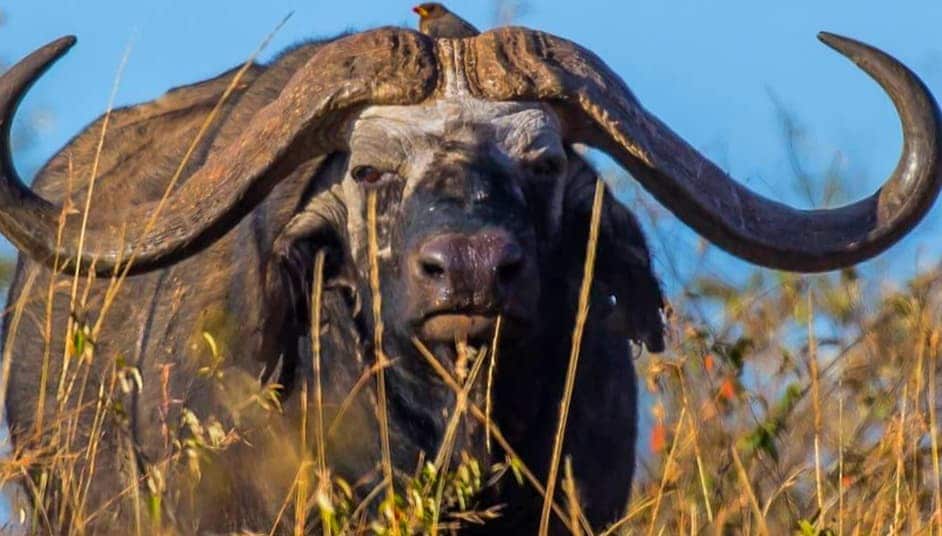
This is one of the few known wildlife animals that have never been tamed by humans. The African Buffalo is known to kill more people in Africa than any other animals.
Boasting of 1.5 Tones, almost 2 meters high to shoulders and 3 meters long. This beast if revoked charges at you at a speed of 37 miles per hour speed and will disfigure you with razor-sharp strong horns.
It is nicknamed here in Africa as the “Black Death”. Ask any tour guide, it is believed to be the most dangerous animal to humans.
9.) African Buffalos Life Span.
The Cape Buffalos can live up to 25 years. That sounds like a short span to me but nature has a way to balance since these animals according to the IUCN Cape Buffalos are the least concern. African Buffalos are no near-threatened Species, I think since hunting them is such a challenge and their gestation period is only 11 months.
They also take their calves under care for a period of up to 1 year.
8.) Grazing Time, Day or Night.
The African buffalos graze mostly at night and early morning before the scorching sun. During the day they will spend most of their time resting under Shade.
This is also the time to look for water as they take up to 40 liters of water per Cape Buffalos in a Day. They will start their dinner just after dawn. I suppose they detest the scorching African Sun. We shall see why?
7.) Facts About African Buffalos Sense of Smell.
The Cape Buffalos has a great sense of smell but poor eyesight and hearing. However, the sense of smell boosts sight and hearing. They can smell predators miles away.
It does boost communication within the herd in subdividing into sub herds through the olfactory cues in animal recognition.
6.) Facts About African Buffalos Horns.
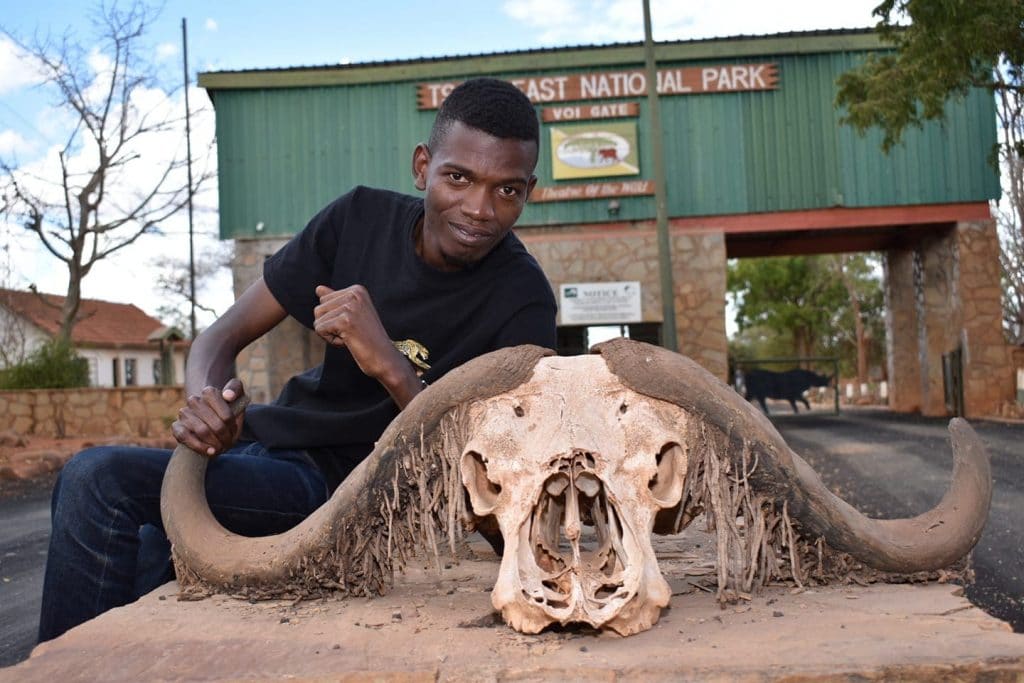
The Horns for the Cape Buffalos are exotic since no other buffalo species have such kinds of horns. Most of the African homes even to date have those buffalo horns erected on the walls and also commonly seen mounted on those transit long-distance vehicles.
Both Male and females have horns but the bull’s horns grow larger measuring up to 4.5 feet across.
The female horns are hook-shaped stretching outwards while the male has what is termed as Helmet. Their horns meet and start from the middle of the head outward (Popularly known as “Boss”) from a distance you can easily differentiate a male and a female Buffalo distinguished by their horns.
5.) Facts about African Buffalos Population.
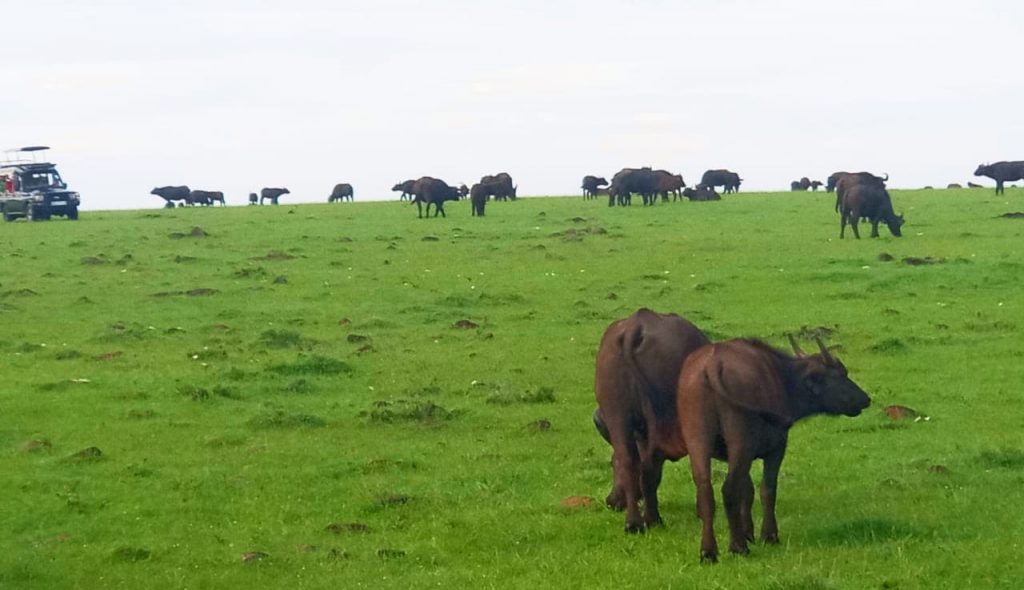
Like seen above, Cape buffalos are nowhere near being endangered according to IUCN. It is believed if anything to go by the recent studies. There are over 900,000 Cape Buffalo across Africa. Due to the way they are natured and their self preventive characteristics for survival. They balance well, making them the only big five animals which are not endangered.
4.) Cape Buffalos Vs Water Buffalos.
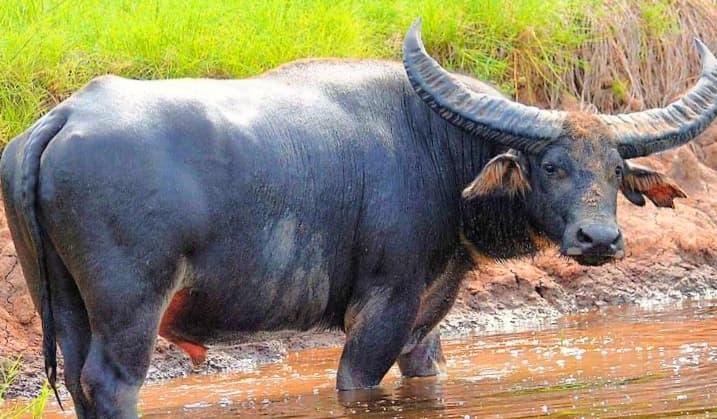
There are only two species in the world Water Buffalo and the Cape Buffalo also known as African Buffalo.
There was a debate kind of a thing that, we have the American Buffalo due to similarity and characteristics but it was concluded the American Buffalo is actually a Bison.
The Water Buffalo is the largest of the Species but the Cape Buffalo is the badass. The Water Buffalos are tamable while the African Buffalo no one can dare tame that beast.
African Buffalo is a no-nonsense kind of animal. While the water Buffalo is more of a domestic animal.
This explains why Cape Buffalos are not declining in numbers, unlike the other big 5 animals.
Water Buffalo originates in Southern Asia and is widely used in Asia for transit goods and transport. Unlike the cape Buffalo, they are docile and friendly to humans.
3.) The Cape Buffalos are gregarious.

Facts about African Buffalos, social life is engrossing and riveting. They can group in herds of thousands when there is plenty of grass but divide into small groups of 30, 60 up to 200 until the grass is in plenty again.
Just like lions, the mature and aging Bulls may stay together in groups of 4 to 5 boys. This group is sometimes called grizzled veterans or “Gangs”.
These beasts stay together and never stay far from river beds. Anywhere near the source of water is the most likely place to spot them. As mentioned earlier they take up to 40 liters of water in a day.
Bulls that have passed their prime are known as “Dagga” and hang around the perimeter of the Buffalo Herds.
2.) Facts about African Buffalos Reproduction.
Just like humans, there is competition and only the Strong will mate with multiple females.
The Strong youthful “Boys” Push the young and the old ones away during mating season to create an amicable environment for mating. The youthful Cape buffalos are between the ages of 9 to 14 years.
The youthful ones also fight until the strong ones are left behind, whom they mate with the females.
The Calves can run after birth and are taken care of by their mothers up to 1 year being fully dependent.
The calves are not born with horns but with two horny “buttons” which take up to 10 years for the horns to grow and the “Boss” to harden.
1.) “Dagga Boys”
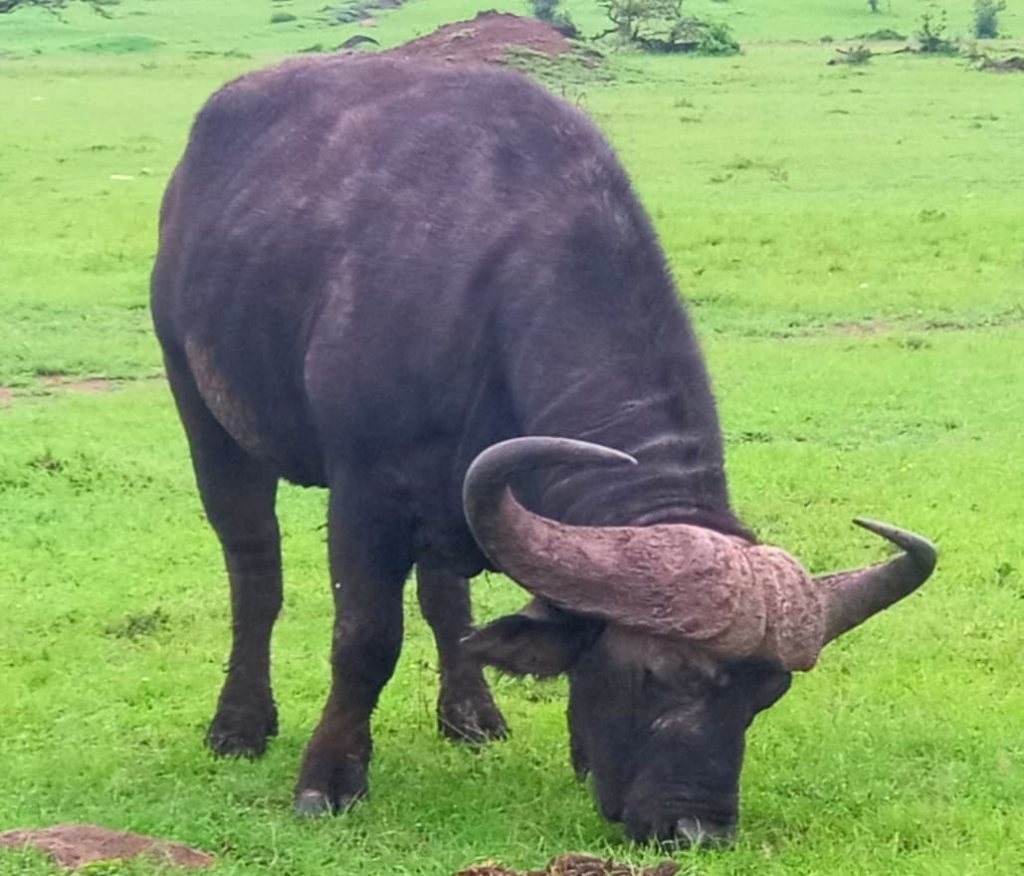
This is the last but not least fact about the African Buffalos, it is both engrossing at the same time sad, I don’t know which side you stand. Let me know in the comment section.
Now “Dagga” means Mud. These are the old Cape Buffalos which have been chased away from the heard by the young and energetic Bulls.
Since they cannot fight back, they retreat to the perimeter of the herd or chose to regroup in groups of 4 to 5 or even sometimes chose to stay alone.
How will you spot them (“Dagga Boys”) They look frail and have patches on their skin, the skin has major patches. I suppose it is fur coming off due to age.
However, don’t take them for granted, they are the most dangerous and can attack without warning.
It is a walking lethal weapon, a mercenary. It is advised never to engage him casually. They are usually a frustrated lot; they tend to compensate for this by being sensitive and in a bad mood.
When there is scorching sun since they have patches. They cover the patches with mud and this is how they got their name “Dagga Boys”.
I hope you enjoyed the read! Did I leave any fascinating facts about African Buffalos? Engage me in the comment section.
Also Read,








